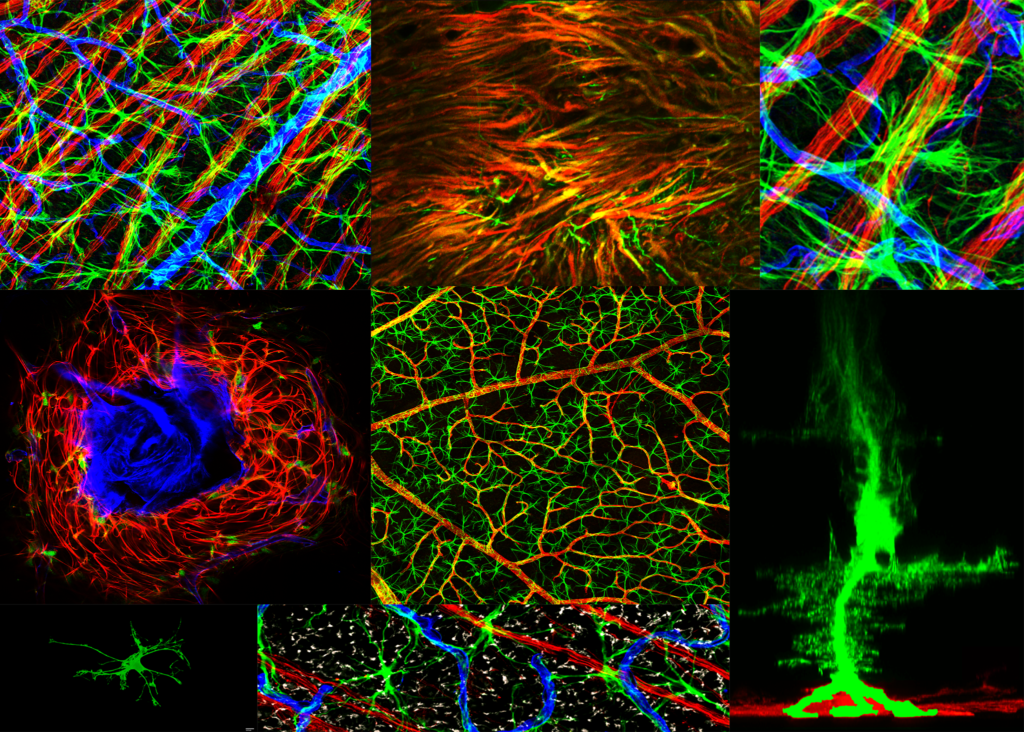
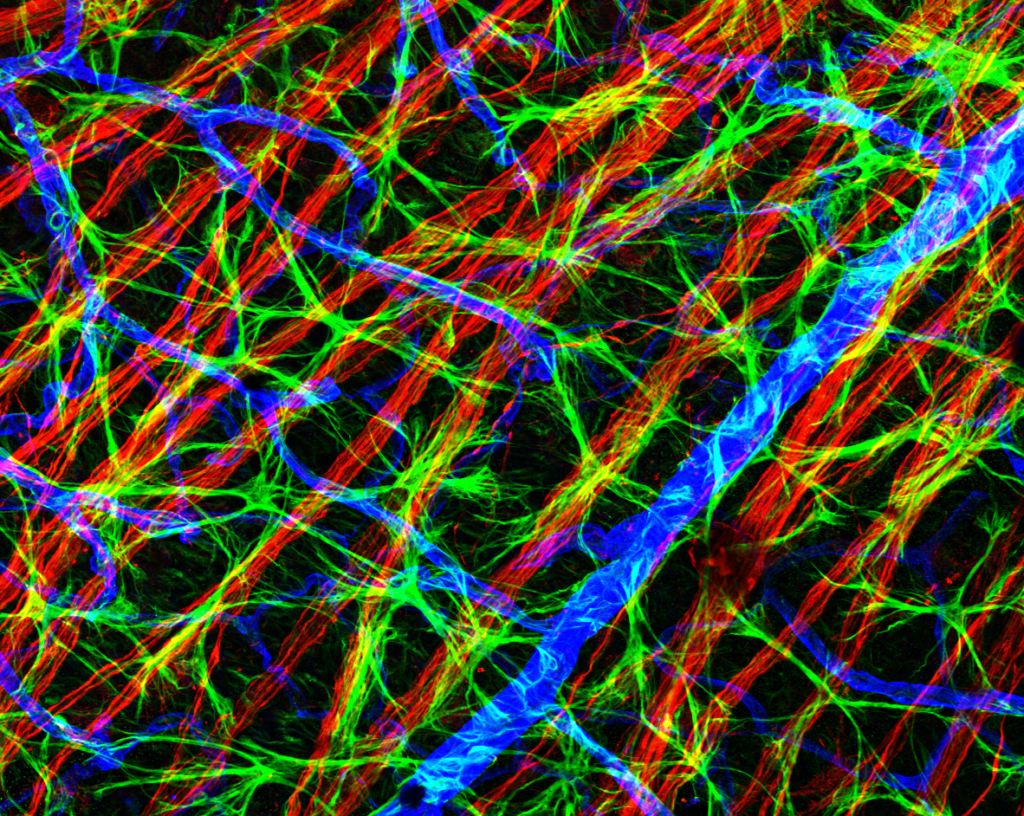
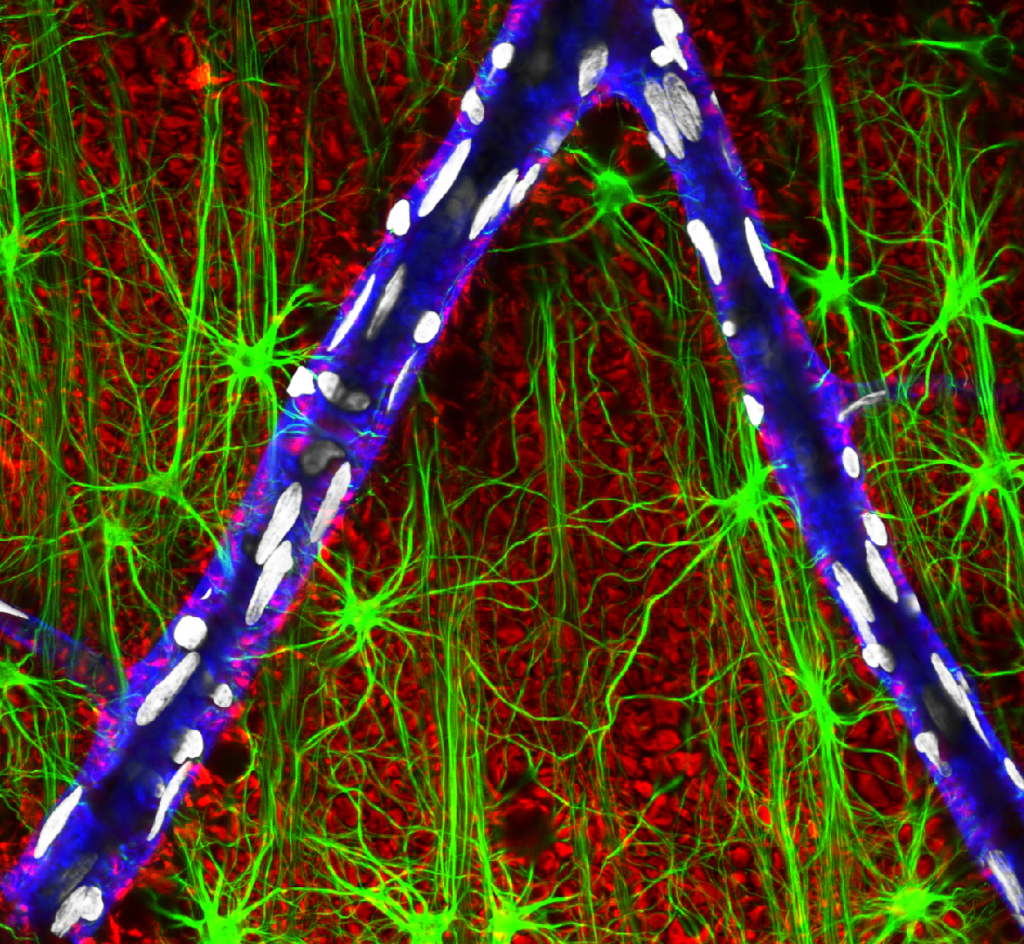
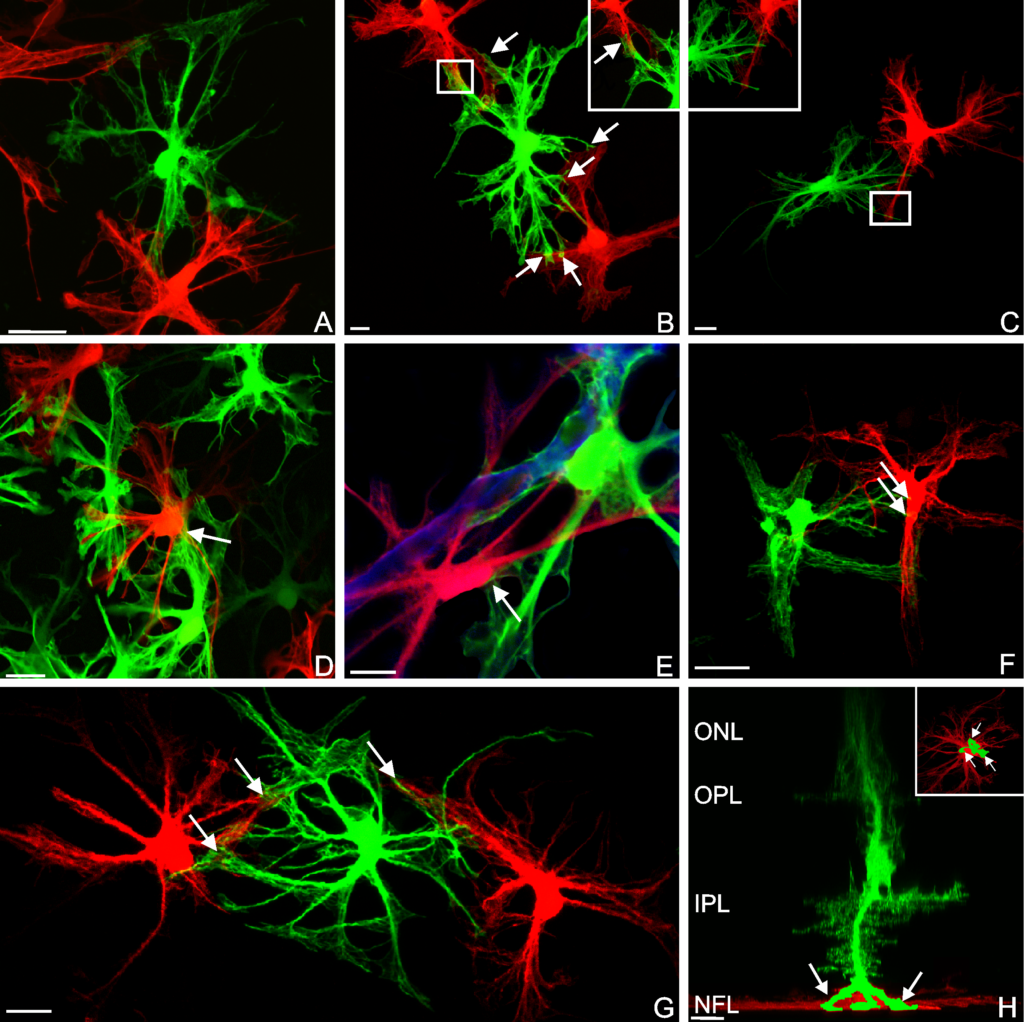
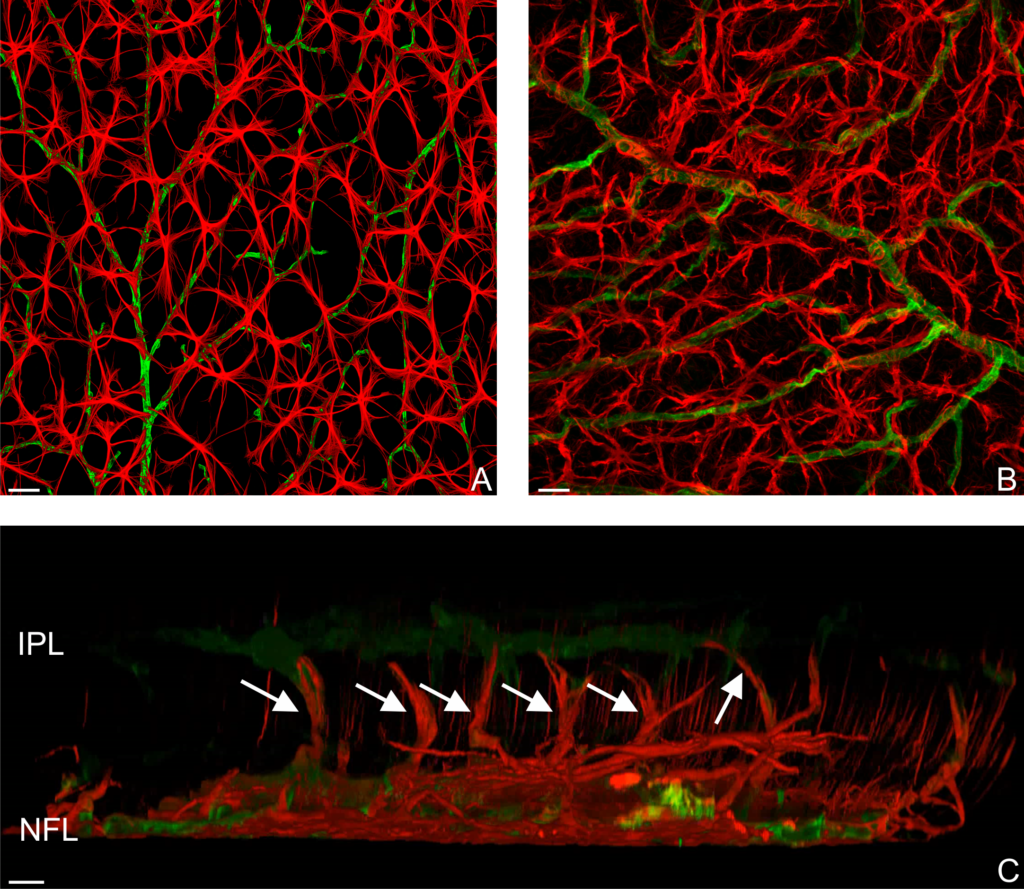
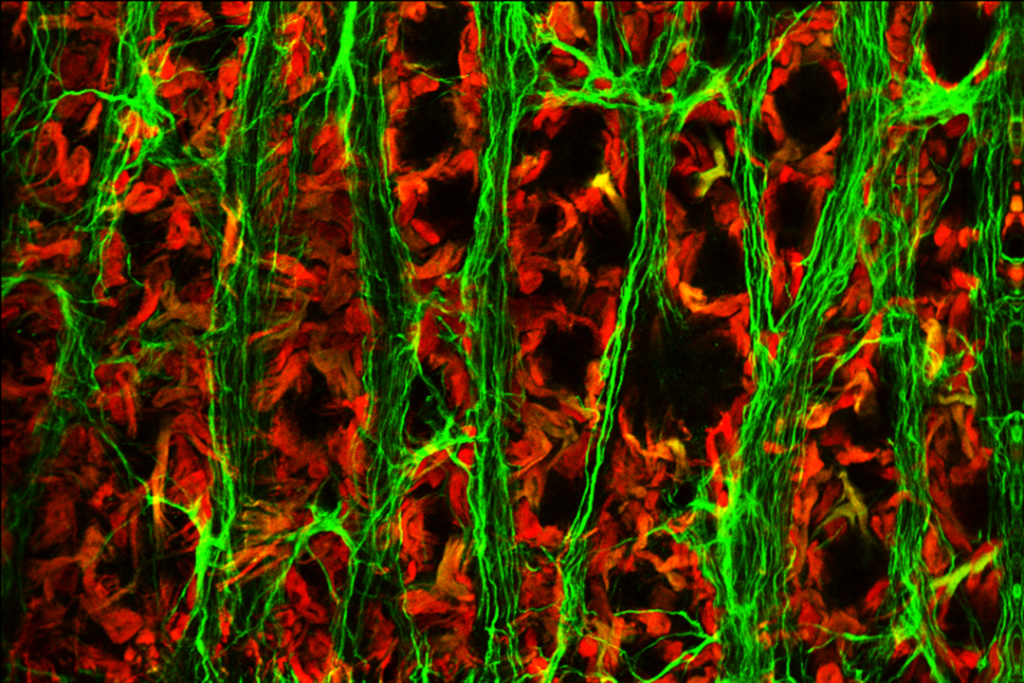
Recently, Drs. Patrick Keeley, Ben Reese, Geoff Lewis, Steve Fisher, and myself published a review article in the Journal of Experimental Eye Research examining the reactive nature of retinal astrocytes in response to injury. The imagery above comes from that publication, which can be found on PubMed here. A synopsis of the issue and the article itself, as well as the other articles accompanying this special issue on retinal remodeling can also be found here.
Abstract:
Although retinal neurodegenerative conditions such as age-related macular degeneration, glaucoma, diabetic retinopathy, retinitis pigmentosa, and retinal detachment have different etiologies and pathological characteristics, they also have many responses in common at the cellular level, including neural and glial remodeling. Structural changes in Müller cells, the large radial glia of the retina in retinal disease and injury have been well described, that of the retinal astrocytes remains less so. Using modern imaging technology to describe the structural remodeling of retinal astrocytes after retinal detachment is the focus of this paper. We present both a review of critical literature as well as novel work focusing on the responses of astrocytes following rhegmatogenous and serous retinal detachment. The mouse presents a convenient model system in which to study astrocyte reactivity since the Mϋller cell response is muted in comparison to other species thereby allowing better visualization of the astrocytes. We also show data from rat, cat, squirrel, and human retina demonstrating similarities and differences across species. Our data from immunolabeling and dye-filling experiments demonstrate previously undescribed morphological characteristics of normal astrocytes and changes induced by detachment. Astrocytes not only upregulate GFAP, but structurally remodel, becoming increasingly irregular in appearance, and often penetrating deep into neural retina. Understanding these responses, their consequences, and what drives them may prove to be an important component in improving visual outcome in a variety of therapeutic situations. Our data further supports the concept that astrocytes are important players in the retina’s overall response to injury and disease.
The most comprehensive and very well thought out write up I have found on this subject on the net. Keep on writing, I will keep on coming by to read your new content. This is my fourth time coming by your blog.